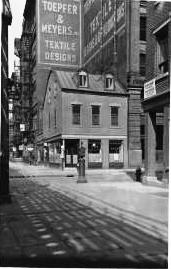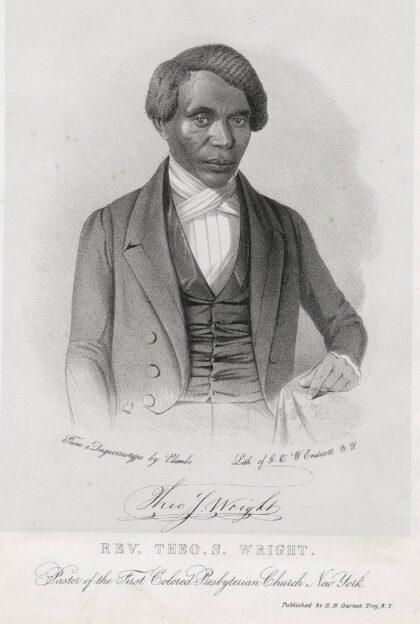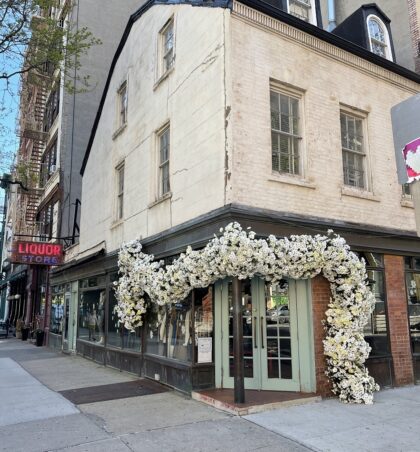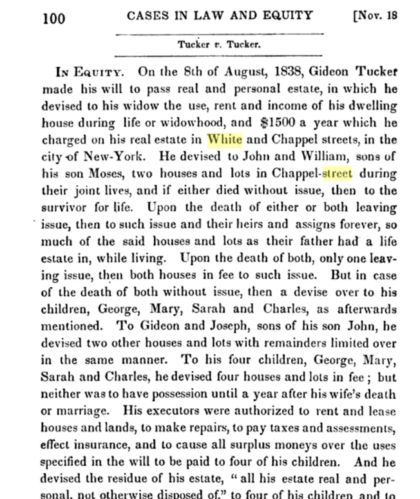The history of 2 White and its connection to the Underground Railroad
The Times had a big story on 2 White and a remarkable resident: the prominent Black abolitionist minister Rev. Theodore S. Wright, who lived there for several years in the 1840s. But I couldn’t tell how or where the reporter got that info, so I dug a little bit more with the help of Tom Miller and Esther Crain, who publishes Ephemeral New York.
According to Columbia’s website “Mapping the African American Past,” Theodore Sedgwick Wright was born in 1797 and was educated at the New York African Free School, which I think would have been on either Cliff or William Street when he attended. He went on to become the first black graduate of the Princeton Theological Seminary (whose library is now named for him), a founding member of the American Anti-Slavery Society and president of the New York Committee of Vigilance, and, according to the MAAP site, his home was a station on the Underground Railroad.
He was the second minister of the First Colored Presbyterian Church, which had several downtown locations, but for the ’30s and until Wright’s death, was on Frankfort Street. The church was by all accounts a stop on the Underground Railroad as well.
Miller, who has contributed all the wonderful histories of Tribeca’s buildings, sent me a link to Doggett’s New York City Directory, and in 1842 and again in 1845 Theodore S. Wright (Rev.) is listed at 2 White; in the 1847 directory he is listed at 144 W. Broadway, which now is at Thomas, and by all historical accounts he died that year.
The house at 2 White was built in 1809 by Gideon Tucker and it seems he lived there until his death in April 1845; Tom sent the link to his will and the house on White and Chappel (then the name of West Broadway) streets was was promised to his widow for life, along with $1500 a year. (He owned many buildings in the neighborhood and uptown.) The house was then passed down to his sons and grandsons. How Wright lived there with the Tuckers is unclear.
Wright’s connection to the building has been covered by many: “Secret Lives of the Underground Railroad in New York City” covers both the house and of course Wright’s prominent role in the abolitionist movement; and Eric Foner counts Wright as one of the founders of the Underground Railroad in his book “Gateway to Freedom.”
And if you really want to get immersed, I recommend the Landmarks Preservation Commission’s amazing interactive map, New York City and the Path to Freedom. This will get its own post soon.



















Delighted to see this article about Wright! He was a very brave man.
“144” West Broadway would have been at the NW corner of Beach Street and West Broadway, before any park was built. In 1897, the City renumbered West Broadway.
Also many decades before 6th Ave was cut through.